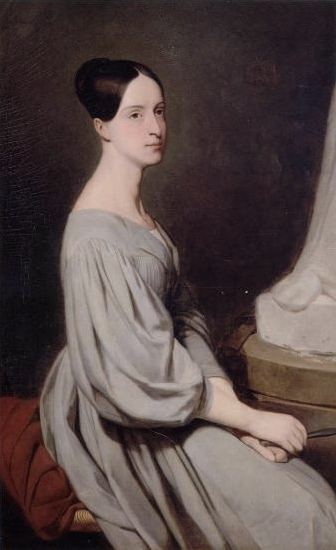Father Louis-Philipe I Name Princess of | House Orleans Religion Roman Catholicism Role 1813–1839 | |
 | ||
Mother Maria Amalia of the Two Sicilies Spouse Duke Alexander of Wurttemberg (m. 1837–1839) Children Duke Philipp of Wurttemberg Parents Louis Philippe I, Maria Amalia of Naples and Sicily Siblings Francoise Louise Caroline d\'Orleans Similar People Louis Philippe I, Louise of Orleans, Prince Louis - Duke of N, Ferdinand Philippe - Duke of O, Francois d\'Orleans - Prince of | ||
Marie Christine Caroline Adélaïde Françoise Léopoldine d'Orléans (12 April 1813 in Palermo – 6 January 1839 in Pisa) was a French princess and, by her marriage, duchess of Württemberg (1837). Before her marriage she was styled Mademoiselle de Valois.
Contents
Biography

She was the third child (and second daughter) of Louis-Philippe, King of the French, and his wife Maria Amalia, daughter of King Ferdinand I of Naples. She was solidly educated on her father's insistence, and took up sculpture and drawing. She had her own studio installed in the Tuileries Palace in which she would work. She was described as a lively character with great energy, interested in both parties and politics.
At the beginning of 1834, due to the consolidation of the July Monarchy and a better acceptance of Louis-Philippe by the monarchs of Europe, the King of the Two Sicilies, Ferdinand II, gave his consent to the marriage of princess Marie of Orléans with one of his younger brothers. Leopold of the Two Sicilies (1813–1860), count of Syracuse, was (like Ferdinand) born of king Francis I's second marriage to Maria Isabella of Spain. Nephew of Maria's mother (queen Maria Amalia), he was thus also half-brother to the duchesse de Berry, born by Francis I's first marriage to archduchess Maria Clementina of Austria,and mother of the Legitimist pretender to the throne of France, the duc de Bordeaux.
However, following the uprisings which afflicted France in April 1834, the court of Naples demanded that Marie immediately receive the part of the Orléans family fortune which was due to her by the "donation-partage" Louis-Philippe had made among his children on 7 August 1830 on the eve on his accession to the throne. Louis-Philippe judged this demand unreasonable, and the marriage proceedings came to an end.
On 17 October 1837, Marie d'Orléans married Prince Alexander of Württemberg (1804–1881), son of Duke Alexander of Württemberg (1771–1833) and his wife Antoinette of Saxe-Coburg-Saalfeld (1779–1824). The cadet branch of a not very prestigious German princely family, Alexander was nevertheless the nephew both of King Frederick I of Württemberg (via his father) and of King Leopold I of Belgium (via his mother). He was also a first cousin of both British Queen Victoria and her husband, Prince Albert as well as Portuguese King Ferdinand II and Russian Emperors Alexander I and Nicholas I. The ceremony took place on 18 October 1837 at the Grand Trianon in Versailles, restored by Louis-Philippe for his personal use. The civil ceremony was taken by chancelier Pasquier, the Catholic ceremony by Louis-Marie-Edmond Blanquart de Bailleul, bishop of Versailles, and the Lutheran ceremony by pastor Cuvier. The following reception took days and was hosted by the king and queen.
They had one child, Duke Philipp of Württemberg, who inherited his father's dukedom and in 1865 married Archduchess Marie-Therese of Austria (1845–1927) (daughter of Archduke Albert, Duke of Teschen). These are the ancestors of the present claimants to the throne of Württemberg.
In 1838, weakened by pulmonary tuberculosis, Marie left for Pisa with the hope that the more favourable climate would help her to a cure. Her brother, the duc de Nemours, was later sent to escort her on their parents' instructions and arrived just before her death on 6 January 1839. She was buried on 27 January at the royal chapel at Dreux.
Artist
A student of Ary Scheffer, she was a talented artist, practising sculpture and drawing. Many of her works survive, mostly now in the Museum of Dordrecht, in the Netherlands.
In particular, she designed the windows in St. Saturnin's Chapel of the Palace of Fontainebleau, which were made by Émile Wattier.
